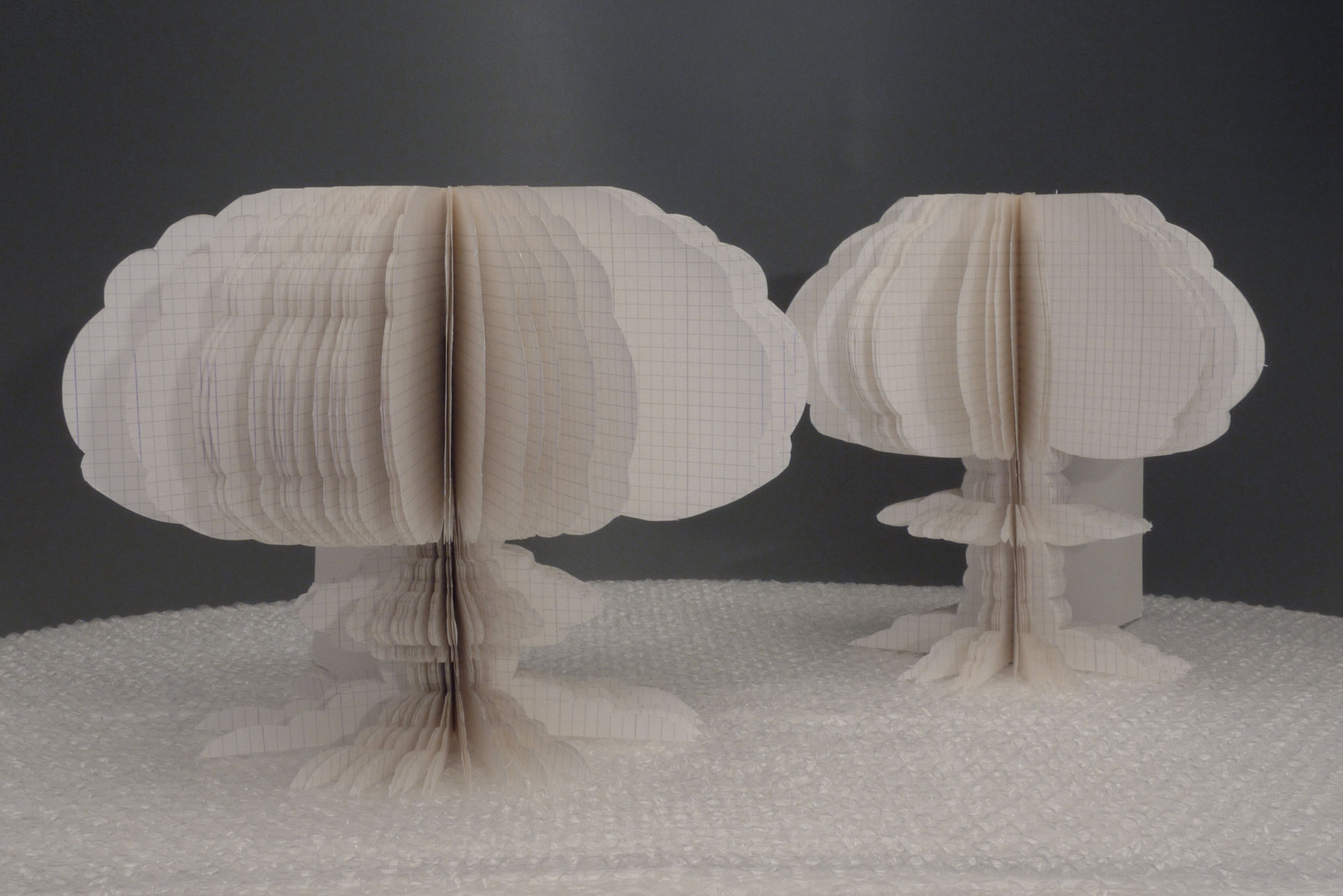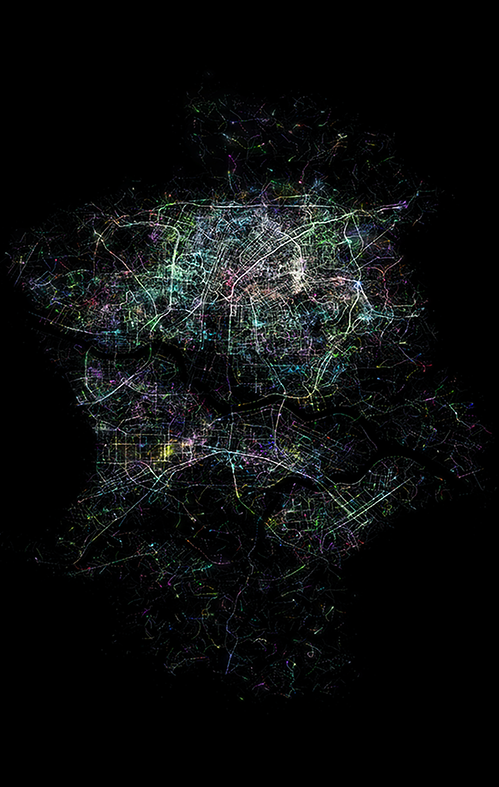
WAKEUPANDSLEEP
H(andy)-Bomb
via highlike submit

H(andy)-Bomb
via highlike submit

Infranet
Infranet is a generative artwork realized through a population of artificial lifeforms with evolutionary neural networks, thriving upon open geospatial data of the infrastructure of the city as their sustenance and canvas. Born curious, these agents form spatial networks through which associations spread in complex contagions. In this city as organism, the data grounds an unbounded, decentralized, open-ended, and unsupervised system. Non-human beings flourish in this environment by learning, discovering, communicating, self-governing, and evolving. The invitation is to witness, through immersive visualization and sonficiation of this complex adaptive system, how a new morphologic landscape emerges as a possible but speculative city.

“Man lives his life in sleep, and in sleep he dies.” ‘As a result of this each person perceives things from a completely subjective perspective. He asserted that people in their typical state function as unconscious automatons, but that a person can “wake up” and become a different sort of human being altogether” GEORGE IVANOVICH GURDJIEFF
meetings with remarkable by Peter Brook

The exterior view of the figure and “point of view shot” are synchronised onto two projection surfaces. If a protagonist leans his head it shifts the observer’s view correspondingly. Observer, figure and object all interact. Netzhammer is not only a master of the erotic of touch, his images awaken unease: they show decay and perishability as well as regularity in the flow of life, which the subject cannot escape, much as expansion and transcendence are desired.
.
A visão externa da figura e o “ponto de vista” são sincronizados em duas superfícies de projeção. Se um protagonista inclina a cabeça, ele muda a visão do observador de forma correspondente. Observador, figura e objeto interagem. Netzhammer não é apenas um mestre do erótico do tato, suas imagens despertam desconforto: mostram decadência e perecibilidade, assim como regularidade no fluxo da vida, da qual o sujeito não pode escapar, por mais que se deseje expansão e transcendência.

Breath from Pineal to Hara
Coloured neon rings light up in a specified sequence behind a two-way mirror, layered with reflections of the visitors and the surrounding space. Starting with the inner ring, the individual rings light up one after the other. Once all rings are illuminated, they switch off again from the outer ring to the inside. The sequence and colours are reminiscent of the breathing technique from Pineal to Hara and the artwork invites the viewer to breath accordingly. Combined with the two-way mirror in front of it, it seems to awaken viewers to the present moment and make the usually unconscious process of breathing conscious for a while. Breathe in. Breathe out.

ليدا عبدول
What We Saw Upon Awakening
In my work, I try to juxtapose the space of politics with the space of reverie, almost absurdity, the space of shelter with that of the desert; in all of this I try to perform the ‘blank spaces’ that are formed when everything is taken away from people. How do we come face to face with ‘nothing’ with ‘emptiness’ where there was something earlier? I was a refugee myself for a few years, moving from one country to another, knowing full well that at every juncture I was a guest who at any moment might to asked to leave. The refugee’s world is a portable one, allowing for easy movement between borders. It is one that can be taken away as easily as it was given: provisionally and with a little anxiety on the part of the host.
Sometimes people say, I am post-identity, post-nation, etc.. I don’t know what this means. For me the most difficult thing is precisely to go past the memory of an event; my works are the forms of my failed attempts to, what others call, transcend. But what? For me art is always a petition for another world , a momentary shattering of what is comfortable so that we become more sophisticated in reclaiming the present. The new wandering souls of the globe, the new global refuseniks —stubborn, weak, persecuted, strong—will continue to make art as long as people believe in easy solutions and closures of the most banal kinds.